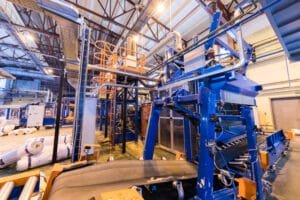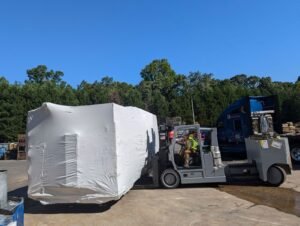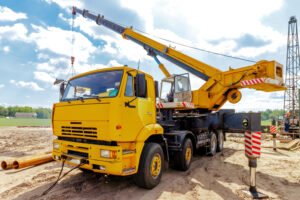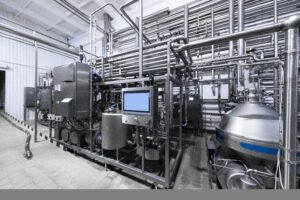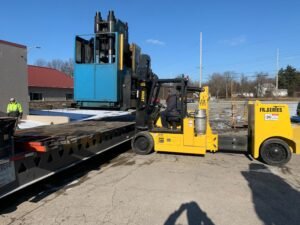Working in congested areas during machinery moves can be challenging and hazardous. The combination of heavy machinery, limited space, and numerous workers can lead to accidents and injuries if proper safety measures are not in place. In this blog, we will explore essential safety measures to ensure the well-being of workers and the success of machinery moves in congested areas.
Conduct a Comprehensive Risk Assessment
Before any machinery move in a congested area, conduct a thorough risk assessment. Identify potential hazards, such as pinch points, blind spots, uneven terrain, or overhead obstructions. Evaluate the machinery being used and the layout of the area. This assessment will help you develop a clear safety plan.
Establish Clear Communication Protocols
Effective communication is critical in congested areas. Ensure that all workers have a way to communicate with each other and with equipment operators. Establish hand signals, use two-way radios, or implement a signaling system to convey instructions and warnings.
Provide Proper Training
Every worker involved in machinery moves should receive adequate training. This training should cover equipment operation, safety procedures, and emergency protocols. Ensure that operators are certified and knowledgeable about the specific machinery they are handling.
Create Safe Work Zones
Divide the congested area into safe work zones to minimize the risk of accidents. Establish boundaries using barriers, cones, or other visual markers to keep workers and machinery separate. Clearly mark pedestrian walkways to prevent unauthorized personnel from entering dangerous areas.
Maintain Good Housekeeping
A clean and organized workspace is essential for safety. Remove debris, tripping hazards, and unnecessary equipment from the work area. Proper housekeeping also includes regular maintenance and inspections of machinery to prevent breakdowns during moves.
Use High-Visibility Clothing and Equipment
Ensure that all workers wear high-visibility clothing, especially in congested areas. Equip machinery with flashing lights, backup alarms, and reflective tape to increase visibility. This helps prevent collisions and accidents caused by poor visibility.
Implement a Tag-Out/ Lock-Out System
Before machinery moves, establish a tag-out/lock-out system to ensure that equipment is powered down and immobilized when not in use. This prevents accidental starts and movements, reducing the risk of injuries.
Plan for Emergency Situations
Prepare for emergencies by having first aid kits, fire extinguishers, and emergency contact information readily available. Conduct regular drills to ensure that all workers know how to respond to accidents or fires swiftly and effectively.
Provide Personal Protective Equipment (PPE)
Require all workers to wear appropriate PPE, such as helmets, gloves, and safety glasses. Tailor the PPE requirements to the specific hazards present in the congested area during machinery moves.
Monitor and Supervise Continuously
Assign a qualified supervisor to oversee machinery moves in congested areas. This supervisor should ensure that safety measures are followed, workers are properly positioned, and equipment is operated safely. Regularly assess the situation and make adjustments as needed.
Conclusion
Working in congested areas during machinery moves demands meticulous planning and a strong commitment to safety. By conducting risk assessments, establishing clear communication, providing training, and implementing these safety measures, you can significantly reduce the risks associated with these operations. Prioritizing safety not only protects workers but also contributes to the efficiency and success of machinery moves in congested areas.


